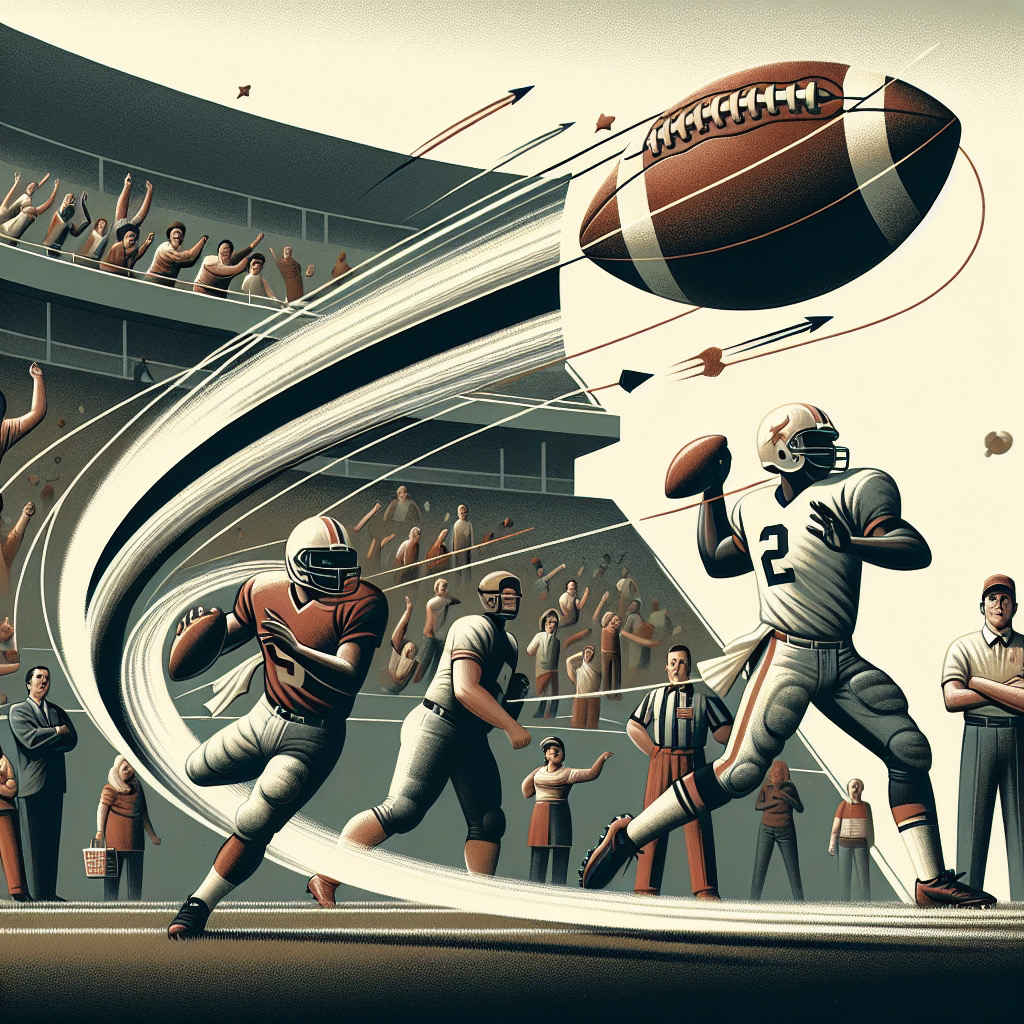Momentum
Is it real? Can it be measured?If You’re Short On Time…
- Yes, Momentum Is Real
- Yes, Momentum Is Measurable
- The Discussion Around “Analytics” Is Misinformed On Both Sides
- A Different Kind Of Analytcis: The Three Laws of Football Behavior
Is Momentum Real?: Momentum Defined

What is Momentum?
Momentum in sports, or any human behavior, is a measure of a behavior’s resistance to changes in the environment. This is true whether analyzing an individual, or a group of performers, like a football team.
We see momentum occur when a series of reinforcers, or punishers, (consequences to that behavior) are presented with out disruption. In this way, momentum can either be positive, or negative.
The more resistant a behavior is to environmental change, that is, the stronger the momentum, the higher the magnitude of disruption needed to break it. Think Newton’s second law of motion.
Is Momentum Real?: Momentum Is Measurable

How Do We Measure Momentum?
There are two very large misconceptions when momentum is discussed among football folks on both sides of the argument:
1. Momentum isn’t accounted for in analytics (anti-analytics folks)
2. Momentum is a psychological construct that can’t be quantified, therefore it isn’t real (amateur analytics folks in the media)
Well, they’re both wrong. Momentum can absolutely be measured, making it quantifiable. Which then also makes it accounted for by those who measure it as a part of their analytics, so momentum should not be used to disprove the value of analytics.
Let’s start with the equation for measuring behavioral momentum:
log (Bx/Bo) = (f/r)
Again, lets remember Newton’s second law of motion: the change in velocity of an object when a force is applied is directly related to that force and inversely related to the object’s mass.
The same is true of behavior/performance. The change in response rate (successful plays or acts of performance) under conditions of disruption (Bx) relative to baseline response rate (Bo) is directly related to the force or magnitude of disruption (f) and inversely related to the rate of reinforcement in a stimulus context (r).
In English, this means that if we can measure the rate of success (frequency of correct responses/plays over time) at the start of a given time period (a game, a season, etc.), and then we see an increase or decrease in that rate, we can measure that difference and the cause of it by any significant environmental changes occurring at the point of change like an increase in reinforcers (first downs, touchdowns) or punishers (turnovers, sacks, TFL).
Lets look at that formula again:
log (Bx: change in response rate / Bo: baseline response rate) = (f: magnitude of the disrupting event / r: rate that the reinforcer or punisher is being provided during the change in response rate)
If that looks complicated, it’s because it is. That’s why those who don’t actually work in NFL analytics would rather dismiss it altogether or discuss it as something it isn’t.
We at Football Behavior, have been doing this for a decade plus, and in fact, momentum is a central tenet of our predictive analytics. We primarily focus on week to week momentum.
One of the reasons we were so bullish on the 2023 Chiefs and correctly predicted them to be AFC Champions before the playoffs started, as well as their upset victories over the Bills and Ravens in the playoffs, is in part because of their momentum.

The chart above shows that the Chiefs offense was struggling at the start of the season. Their scoring behavior rate (SBx) was regressing and they had just bottomed out with just nine points against the Broncos. Then something happened seven games in that seemed to break that negative momentum.
What we see on that chart is that following that change, a new momentum was created. We see a steady improvement week to week in their scoring behavior rate. 36% week to week improvement to be exact. Sure, there are sporadic negative performances, but remember the rule about disruptors. They need to be strong enough to overtake the current trend.
Instead we saw continued bounce backs to the trend line established by their momentum, indicating, the occasional bad game wasn’t disruptive enough to their overall momentum.
We look at trends like this for all of our predictions, and can even anticipate when momentum is unsustainable and is likely to break soon.
Why Does Everyone Get It Wrong?
Well, you saw the equation above. It’s complicated. And it’s unique to 32 teams.
In our efforts to try to explain what we see on the field, too often folks will rely on bias in what they see. Many media analysts today, especially for online publications, have come to their position through fandom and a self-taught method of analysis.
This can be done through YouTube or reading other peoples work, especially about analytics. This then gets extrapolated into their own work once they have formed, in their opinion, a comfortable understanding of the source material.
However, this leads to a few explanatory fictions. It frames the discussion around analytics as a singular collection of the same 5-10 standardization metrics.
Namely EPA, DVOA, Win Probability, Success Rate, etc. While these metric have their value to certain people, that alone is not what “analytics” are. In fact, most NFL teams don’t put emphasis on those specific metrics.
Every one of the 32 NFL teams is an independent environment making up a multiverse that is the NFL. Many have their own independent analytics departments using proprietary modeling that is specific to needs of that particular organization.
They aren’t all making decisions off of publicly available standardization data, because they know their specific team isn’t standardized. It’s its own unique environment.
So things like success rate or win probability are going to look different for many of the NFL teams. Some don’t love EPA because using historical averages across very unique environments is not good statistical practice.
Others feel differently. Like anything else, each team has its own approach to playing the same sport. Just like Coke and Pepsi take different approaches and value different things when selling soda. (Coke is better, especially at McDonalds).
So when the conversation is between fans who claim momentum is a gut feeling, and media members who use analytics as a singular argument builder, everyone loses.
Momentum is real, it is measurable, and NFL analytics are wholly different depending on who is the person applying them. It isn’t binary.
In my opinion, Coke is better than Pepsi. But which Coke is the best? And on, and on we go.
READ MORE
The Latest Behavioral Analysis Exclusively Here At Football Behavior
Kirk Cousins, The Shanahans, And The QB Collective: Player vs. Environment
Kirk Cousins career has been influenced by the Shanhans since day one back in 2012 when he was drafted by Mike Shanahan. 🎥 WATCH: Player vs. Environment Ep. 3: Cousins and the Shanahans The Shanahan Influence and QB Collective The story of Kirk Cousins...
Justin Fields Leaving Bears Was Best Thing For His Future
No, trading him wasn't the problem. In fact, that was probably the best thing they could have done for him. 🎥 WATCH: Justin Fields Needed New, Better, Environment In the highly competitive world of the NFL, the trajectory of a player's career can often hinge on...
Falcons Sign Kirk Cousins: This Is The Way
The Falcons have disappointed in their seasons under Arthur Smith. They have been competitive in the most mediocre of ways, but wins are what pays the bills and keeps jobs. Enter Raheem Morris. Immediately he has identified how much better this team would be...

